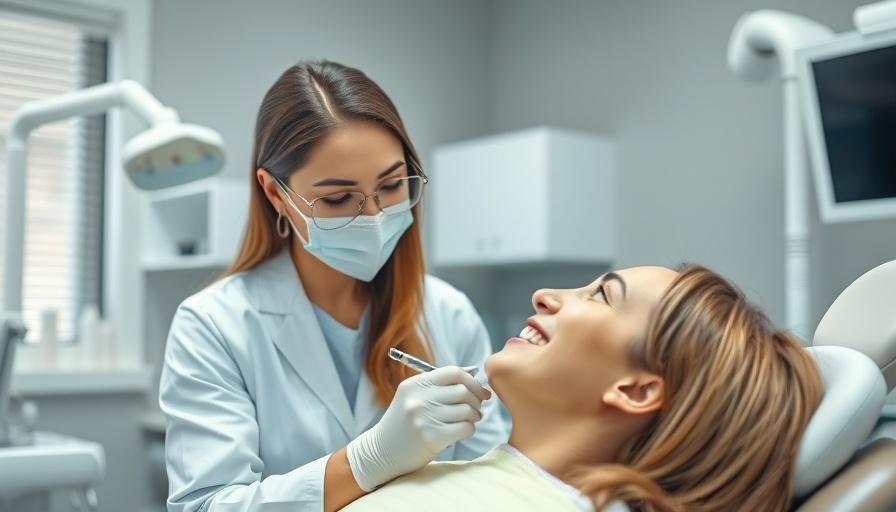
Maximizing Your Dental Appointment: Strategies for Effective Patient Care
When it comes to dental hygiene, efficient use of appointment time can make a substantial difference in a patient's overall oral health. As dental hygienists navigate through busy schedules, understanding how to adapt to various patient needs within a limited timeframe becomes crucial. Whitney, a registered dental hygienist, emphasizes the importance of tailoring care for different types of dental patients, regardless of whether their appointment is straightforward or complex.
In 'How to Treat Any Dental Patient in Just a 60-Minute Appointment!', the discussion dives into crucial strategies for optimizing patient appointments, highlighting insights that are invaluable to dental hygienists and their practices.
Understanding Patient Needs: The Key to Successful Appointments
A significant aspect of any dental appointment relates to the diverse needs of patients. Some may come in with strict adherence to oral hygiene routines, while others may require more support and education. Recognizing this diversity allows dental hygienists to turn each appointment into a valuable opportunity for teaching, guiding, and motivating patients.
Whitney eloquently points out the necessity of breaking down barriers in patient communications. For example, when high levels of buildup reappear during routine cleanings, instead of focusing solely on debridement, it’s fundamental to assess home care habits. This opens the conversation for oral health education, asking simple questions that can lead to significant insights into how patients maintain their routines, such as the length of time they brush their teeth.
Real-Time Education: A Game Changer in Dental Hygiene
One effective strategy is to incorporate education throughout the appointment, not just at the end. This approach involves discussing findings during the cleaning process, which can enhance understanding and engagement. For instance, pointing out areas of concern while working can provide immediate feedback, ensuring patients leave with a better grasp of their oral health and specific actions they can take at home.
Utilizing Technology in Dental Hygiene
The advent of technology has revolutionized the dental field, offering tools that can encourage patients to practice better oral hygiene. One such resource is the Better Mouth app, which fosters accountability by allowing users to track their brushing and flossing habits. By introducing patients to such tools, hygienists can extend their influence beyond the appointment, encouraging consistent care that can lead to improved dental outcomes.
Tackling Common Misconceptions and Myths
Many patients harbor misconceptions about dental care, particularly about effective brushing and flossing techniques. Whitney shares that many individuals are unaware of the recommended brushing duration or proper flossing methods. Hygienists can clarify these myths by demonstrating techniques first-hand during appointments, significantly impacting long-term habits.
Future of Patient Interaction: Empowering Consistency
Looking towards the future, enhancing patient relations is imperative for dental practices. Building a rapport based on trust and education not only improves the patient experience but also fosters a culture of accountability for oral health. When patients feel empowered by their knowledge and resources, they are more likely to maintain dental hygiene practices that contribute to better long-term health.
Final Thoughts: Make Every Appointment Count
Whether a patient’s appointment lasts 45, 50, or a full 60 minutes, the goal remains the same: to educate and motivate. As Whitney highlights, time spent on fostering positive behavior changes during appointments can yield substantial benefits, from decreased plaque and calculus to increased patient satisfaction. By integrating education into every aspect of care, dental hygienists can create a profound impact on their patients' lives.
To all dental professionals, remember that enhancing patient education doesn’t require extra time; it requires thoughtful engagement. Few moments of interactive guidance can lead to long-term health benefits. As you continue to refine your approach, consider incorporating engaging technology and direct education to create a lasting positive influence in your practice.
 Add Row
Add Row  Add
Add 




Write A Comment